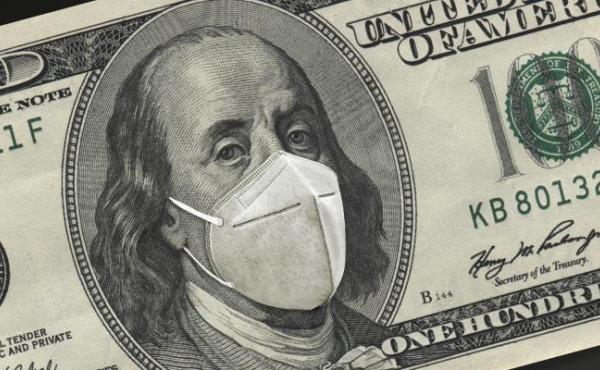
The ECGI blog is kindly supported by

Part Three: COVID-19 lessons and questions for the future
So we now know that firms were able to raise massive amounts of external funding from both banks and security markets. But how effective were the fiscal policy responses that came to the rescue, what lessons can we take from the shock and what remains to be seen?
The extreme severity of COVID-19 prompted public policymakers to react with an almost unprecedented speed and use of a variety of instruments ranging from nonconventional monetary policy to relaxation of prudential standards in banking supervision, from government grants aimed at bailing out distressed companies to public loan guarantees and schemes that paid a large fraction of furloughed workers’ salaries. Some policy interventions were hybrids. The Paycheck Protection Program (PPP), which was the main U.S. fiscal response to COVID-19, was a guaranteed loan program whereby eligible firms applied to a participating bank, which disbursed funds upon approval by the Small Business Administration (SBA), but the loans were forgivable if the firm kept employment and wages at pre-pandemic levels. It therefore turned into an equity injection conditional on employees’ retention, just like the payments that firms received via STW schemes. In the eurozone the coordinated intervention of monetary, microprudential, and macroprudential authorities amplified the effects of individual measures in supporting the provision of liquidity to firms. The ECB’s Pandemic Emergency Purchase Program (PEPP) complemented the national fiscal responses to the pandemic.
By transferring default risk to the government, public loan guarantees encouraged banks to increase lending while they leveraged on banks’ superior information about firms’ business prospects compared to the government. The programmes are likely to have contributed to the decrease in the number of business bankruptcies, which dropped to an unusually low level in 2020 and were largely effective in avoiding SMEs failures.
However, loan guarantee programs also have a dark side—namely, excessive forbearance of bad debt. The survival of “zombie firms,” their “diabolical sorting” with weak banks, and debt overhang problems can hinder post-pandemic investment, as indeed was the case after the 2008–09 crisis. Additionally, a bank with an exposure to a firm could ask it to use the guaranteed debt to repay its existing loans, transferring the risk to the state. Thankfully, evidence indicates that in the eurozone, public loan guarantees mainly contributed to the continued extension of credit to relatively creditworthy firms hit by the pandemic, especially smaller ones.
In the US, the evidence is mixed. The Paycheck Protection Program (PPP) alleviated the liquidity shortfall faced by SMEs and increased their expected survival by 14% to 30%, while raising employment at eligible firms. However, firms that received loans too late, became more financially distressed. The aid disproportionately flowed to areas and sectors less severely hit by the virus, and failed to restore the vast majority of jobs lost after the initial COVID-19 shock. PPP funds went entirely to industries least affected by the pandemic or government shutdowns— that is, high-resilience industries.
The studies considered so far examine the short-term impact of the pandemic. What remains to be understood is whether the pandemic will have any lasting effects on companies. To what extent has the COVID-19 shock itself persistently changed the productivity and profitability of the most affected industries? Has the pandemic induced persistent changes in the nature of work and the type of positions into which firms seek to hire and what jobseekers expect? Will there be a reallocation of labour and capital toward industries that can rely more extensively on flexible work practices? The post-pandemic shortage of labour, especially in the service sector, and more specifically in the catering, hospitality, travel, and health sectors, remains a challenge. At least as importantly, there may be an increase in the number of companies facing debt overhang issues after the pandemic. Have the “missing bankruptcies” of 2020 only been postponed? (This Bloomberg piece on the zombie apocalypse suggests that the 'reallocation' continues). Can fragile companies survive new macroeconomic shocks such as those deriving from the war in Ukraine and the attendant increase in energy prices? These risks are compounded considering that both monetary and fiscal policies will probably be far less accommodating in response to these shocks due to the current increase in inflation. Have investors’ preferences changed? With raised awareness of the health risks stemming from a mismanaged environment, will there be a reorientation of their portfolios toward environmentally responsible companies?
Future research could assess the persistence and magnitude of these effects of the pandemic and their impact on the reallocation of resources across industries and companies. The 2020 shock itself may indeed have long-lasting consequences for companies, at least for those that proved less resilient during the pandemic.
For more detailed analysis and references please read:
COVID-19 and Corporate Finance
Marco Pagano University of Naples Federico II, CSEF, EIEF, ECGI and CEPR Josef Zechner WU Vienna University of Economics and Business, Vienna Graduate School of Finance, ECGI and CEPR
The Review of Corporate Finance Studies 11 (2022) 849–879
Available at: https://academic.oup.com/rcfs/article/11/4/849/6665905





